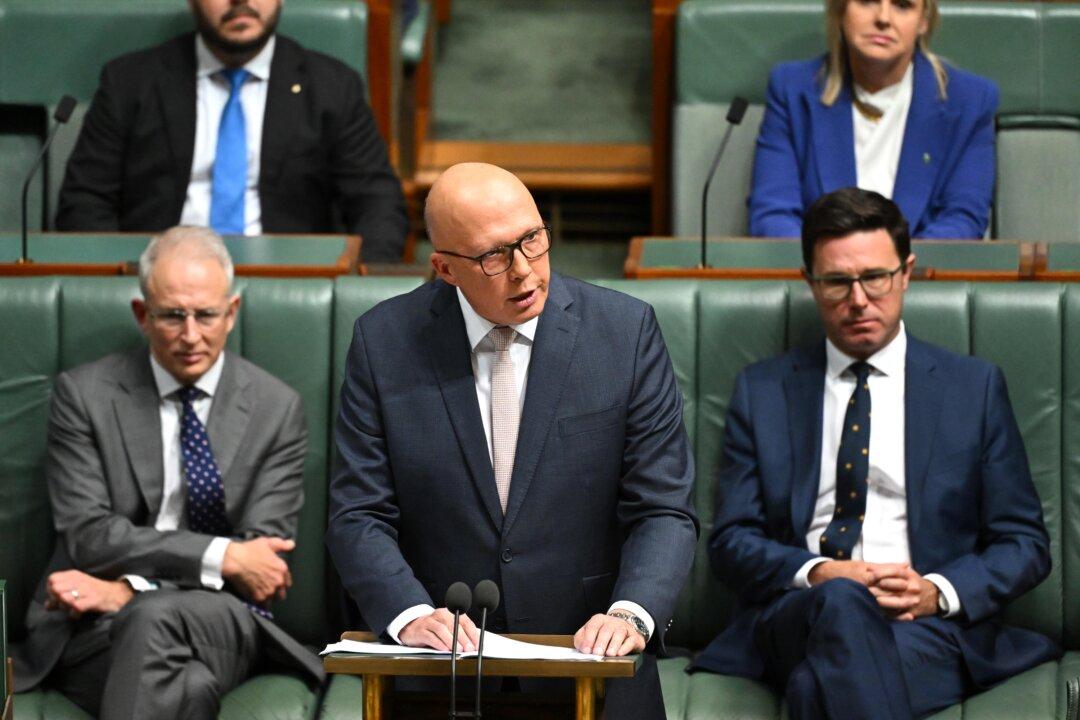Will the AUKUS nuclear subs consume the Australian budget? It’s a good question. The expenditure is huge in Australian terms.
The total deal is currently worth $386 billion (US$260 billion) to be spread out over 30 years. So, on average, it will cost $12 billion a year. This is about one-third of the annual defence budget, which is $38 billion.
The submarine acquisition will be the single largest piece of defence procurement ever, in absolute and percentage terms.
There is no way that this can be contained within the existing budget without cutting vital defence infrastructure and services, and restricting purchases of other necessary defence items.
So, the defence budget will need to grow.
These are some very rough figures that assume payments are made evenly over the life of the submarines. This is not a realistic scenario and costs will be understated at some stage and overstated at others.
It is illustrative, but there will be plenty of wiggle room for the federal treasurer along the way as to how he juggles the budget.
If you assume that the original contract with the French for diesel subs of $90 billion is more or less contained in the existing defence budget (because they were replacing the Collins-class subs which are already in service), then the additional annual cost of the AUKUS deal is somewhere in the vicinity of $10 billion per year—an increase in the defence budget of one-third.

Australia has a GDP of around $2.2 trillion and currently spends 1.8 percent of that on defence, just shy of the 2 percent that former Prime Minister Tony Abbott originally promised when the Coalition won in 2012.
The additional expenditure would make it 2.2 percent, which is the world average for military expenditure.
A Growing Economy the Best Way to Ensure Our Freedom
With increasing CCP belligerence in the South Pacific, and with Australia stepping into a role as a friendly and trusted counterweight, its military forces need to be reconfigured so it can project power, as well as better defend its borders. That will require a lot of retooling.India spends 2.4 percent of GDP on defence and South Korea 2.8 percent. So, let’s project 2.5 percent of GDP as a likely percentage required to rebuild and maintain a formidable force. That increases defence spending by 41 percent to $54 billion a year—an increase of $16 billion.
This compounds the government’s budget problems. It is projected to run cumulative deficits of $238.85 billion over the three-year forward estimates for the current budget period. This defence commitment would add another $64 billion.
Much of the anticipated blowout is driven by social security, most significantly the NDIS (National Disability Insurance Scheme)—a hard area to cut even though it is the largest single area of expenditure.
What is to be done? Ultimately, the best defence policy is a strongly growing economy, but the temptation will be to raise taxes.
This will have the opposite effect because raising taxes in this case will redirect resources to areas of lower productivity. Yet it is high productivity that is at the base of all increases in wealth in a modern capitalist economy.

Military expenditure doesn’t add to productivity; it’s a net drag that we are happy to bear to ward off the rare but occasionally potential catastrophic event of invasion or dominance by a hostile foreign power.
It’s an insurance policy and doubling what you pay on your insurance policy will have no effect on your productivity, unless you have a catastrophic event. Even then, if you have paid more than you need to, it can further destroy productivity as you can overpay for the outcome.
Other Costs to Look At
One area they should look at is other areas of capital expenditure.It is difficult to know exactly how much is being spent on the “energy transition” as there is so much that is indirect and almost impossible to quantify, like consumers paying higher power prices.
Despite claims of being cheap and green, everywhere that renewable energy has become a significant part of the network, costs have escalated, and productivity has declined.
The Chinese regime obviously recognises this, and their military is being fuelled by increasing the conventional energy generation in the country.
China is mostly a green—and brownfield—area for electricity development. If renewables were really cheaper, then that is what they would be building, rather than a coal-fired power station every week, augmented with nuclear power.
One thing the AUKUS subs do bring to the table is normalising nuclear power generation in Australia.
They will be generating electricity to meet the industrial and living needs of Australians, albeit submariners, and they will be stationed or will visit all of Australia’s capital cities as well as other major ports.
One technology that is cheap and green, and which can lift productivity—at least over the baseline being created by renewables—is nuclear energy. And these subs could be a catalyst towards seeing its adoption.
The government also needs to cut the number of regulations and the opportunities for lawfare that get in the way of major projects, particularly mining and agriculture—two industries where Australia has world-leading industries.

Lastly, but with the least likelihood of being achieved, they need to reform labour laws.
Since 2007, we have been gradually moving our industrial relations back to the 60s, when productivity was low and distrust between workers and bosses high.
Unfortunately, they are moving further in that direction, with independent contractors the latest target for restrictive employment practices.
In the last two years, war has reshaped the psychology in a number of European countries, where some of the measures I have suggested are being adopted.
The potential reality of war has driven this submarine purchase, and hopefully that denotes a broader willingness to change here.
Even if it doesn’t, the budget problems that an enhanced defence capability raise may force the issue, to the benefit of all.
This insurance premium is worth paying for an array of reasons.





